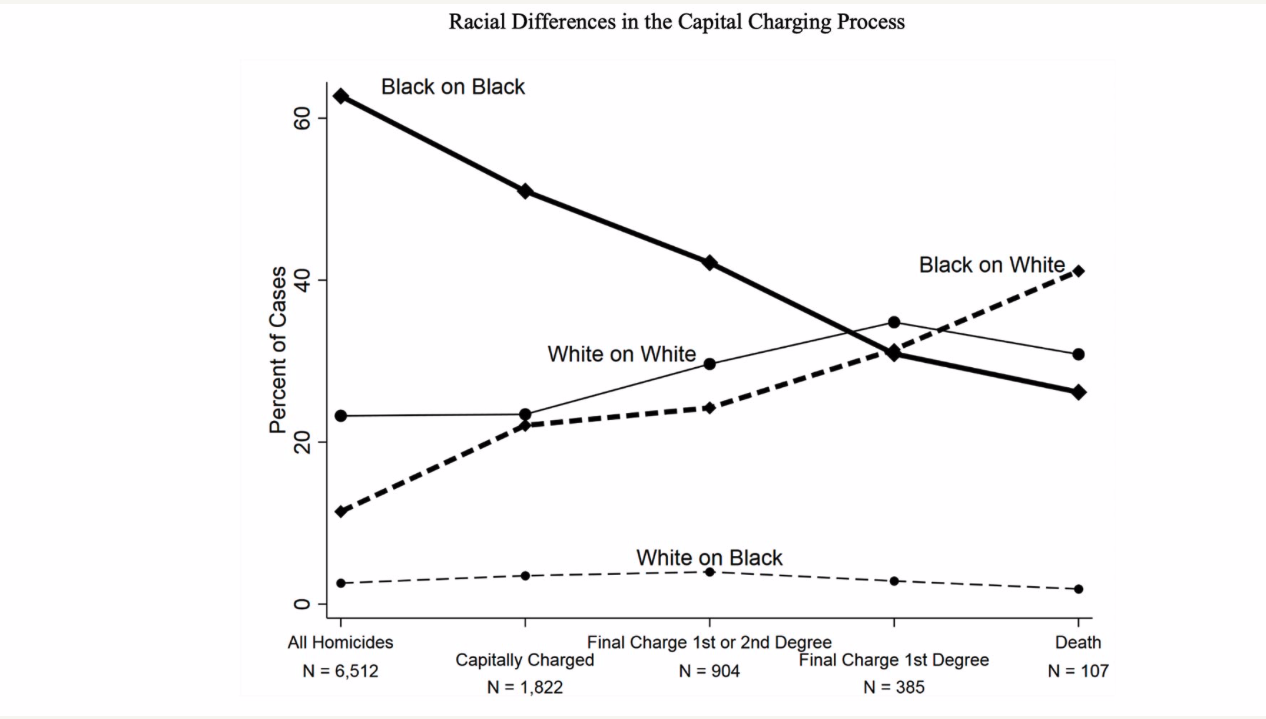Study Finds Racial Bias in Louisiana’s Death Penalty. Cases with white victims—especially those with Black suspects are much more likely to lead to harsher outcomes
/From [EJI] A new study by leading death penalty researchers looking at the outcomes of homicide cases in Louisiana found that cases in which a Black man was accused of homicide involving a white female victim were more than five times as likely to lead to a final capital charge or a death sentence, compared to cases involving Black suspects and Black victims.
“The Louisiana death penalty system is heavily weighted by a tendency to seek the harshest penalties in those cases with white female victims,” researchers Tim Lyman, Frank R. Baumgartner, and Glenn L. Pierce determined. “Our powerful and consistent findings of racial and gender-based disparities hold in a multivariate analysis and are inconsistent with the equal protection of the law or any common understanding of equality or justice.”
For Race and Gender Disparities in Capitally-Charged Louisiana Homicide Cases, 1976-2014, published in the Southern University Law Review, the researchers reviewed more than 6,500 homicides in Louisiana from 1976 through 2014. Of those, prosecutors filed capital charges in 1,822 homicide cases and later reduced those charges in all but 385 cases. Ultimately, 107 cases resulted in death sentences.
The study found dramatic changes in racial characteristics as cases moved through the filters of the capital prosecution process.
Cases with white victims—especially those with Black suspects1 —are much more likely to lead to harsher outcomes, the authors wrote. Homicides with Black suspects and white victims were relatively rare, comprising just 11.4% of all homicides. But 41% of all death sentences were imposed on Black defendants in cases with white victims.
In contrast, as the researchers illustrated in the chart below, crimes with Black suspects and Black victims get winnowed down at each step of the process, from 62.7% of all homicides to just 26.2% of death sentences.
The findings are consistent with prior studies by the study authors and other established researchers that show “a strong and persistent pattern of disparities” in Louisiana’s death penalty and demonstrate that these disparities are strongly correlated with the victim’s race and gender, the authors wrote.
The race of the victim played a particularly salient role in outcomes. Having a white victim doubled the probability of a death sentence for a white suspect, the study found. Black suspects in cases with white victims were 8.6 times more likely to be sentenced to death than those suspected of killing a Black victim.
But while both Black and white defendants were more likely to be sentenced to death when the victim was white than when the victim was Black, cases with white victims and Black defendants were almost three times more likely than cases with white victims and white defendants to end with a death sentence.
The new study also examined the impact of race at earlier stages of capital prosecutions, starting with initial charges. It found that “the decision to bring capital charges, even if they are later reduced or dropped, is subject to strong disparities based on racial factors.”
Indeed, cases with Black suspects and white victims were 2.4 times more likely to have charges of first-degree murder than cases with Black suspects and Black victims, and were twice as likely to have a charge of first-degree murder as cases with white suspects and white victims.
From initial charges stage to the final charging decision made before trial starts or before a plea agreement is accepted, the study found that homicides with Black suspects and Black victims have about a 10% chance of proceeding to final capital charges. But that chance increases to 40% in cases where a Black male is accused of killing a white female victim, even when other variables are held constant.
Overall, crimes with white victims have much higher rates of final capital charging than crime with Black victims, the researchers found. [MORE]






































































































































































































































































